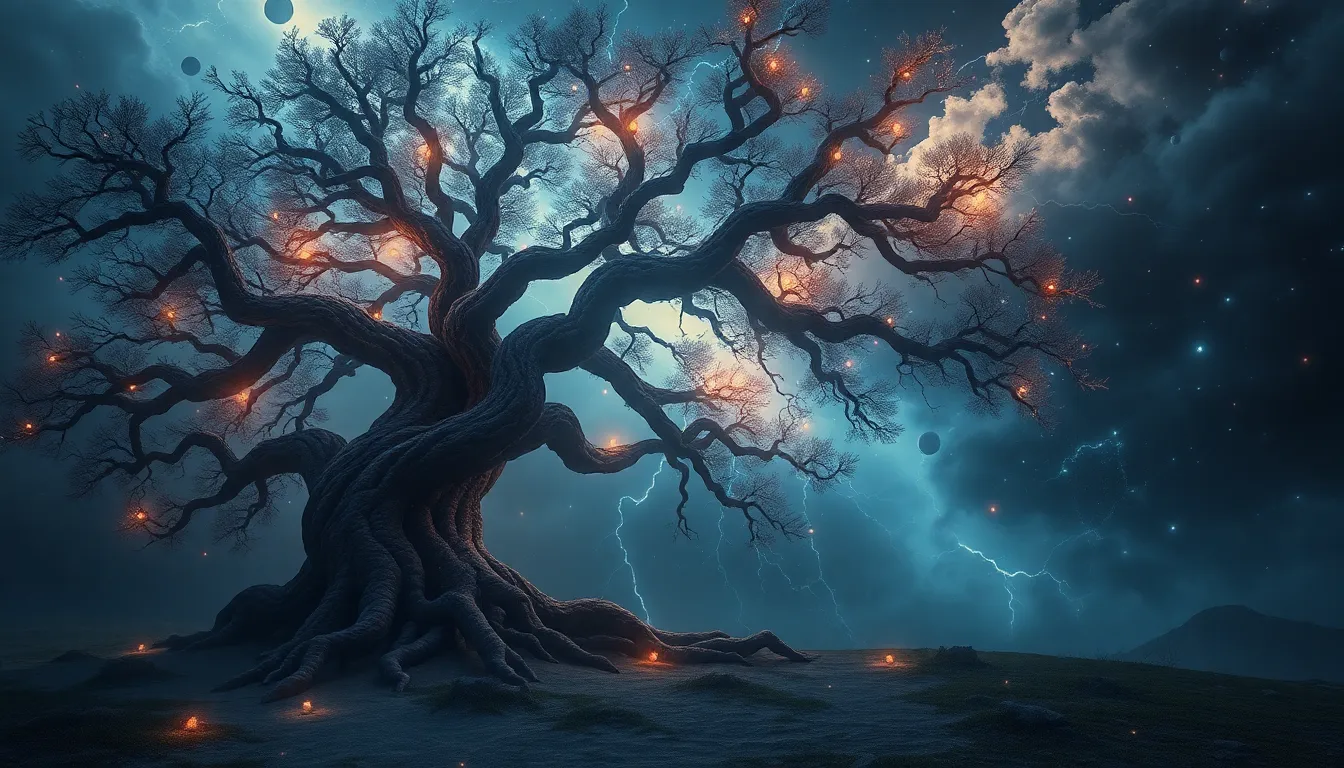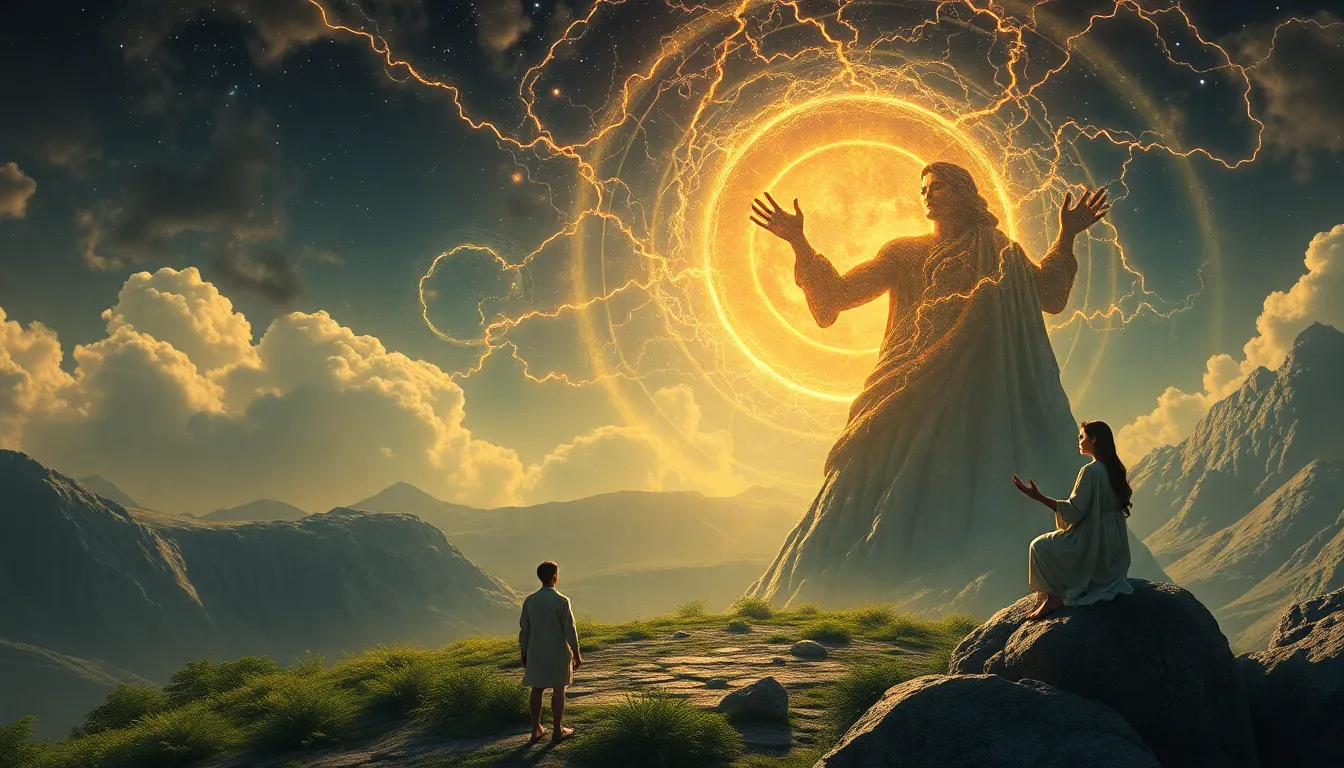The Tree of Dreams: Myths of Prophecy and Vision
Introduction to the Concept of the Tree of Dreams
The Tree of Dreams is a powerful symbol found in various cultures around the world, representing the connection between the earthly and the spiritual realms. This archetype embodies the notion of growth, potential, and the bridging of the conscious and unconscious mind. In many mythologies, trees are seen as conduits for dreams and visions, where the roots dig deep into the earth, anchoring the dreams of humanity, while the branches reach out to the heavens, inviting prophecy and insight.
Throughout history, trees have been revered as sacred entities, often associated with wisdom, life, and the mysteries of the universe. This article will explore the rich tapestry of myths surrounding the Tree of Dreams, delving into the historical roots of prophetic trees, cultural interpretations of dreams, and the enduring legacy of these symbols in contemporary spirituality.
Historical Roots of Prophetic Trees in Mythology
Many ancient civilizations regarded trees as powerful symbols of prophecy and divine communication. These cultures often believed that sacred groves and specific trees were inhabited by spirits or deities that could provide guidance and foresight. Here are some notable examples:
- The Sacred Groves of the Celts: In Celtic culture, sacred groves were places of worship and prophecy, where druids would commune with nature and seek wisdom from the spirits residing within the trees.
- The Oracle at Dodona: In ancient Greece, the sacred oak tree at Dodona was believed to be the dwelling place of the god Zeus. Priests interpreted the rustling leaves as messages from the divine, offering prophetic insights to those who sought guidance.
- Yggdrasil of Norse Mythology: Yggdrasil, the World Tree, is a central symbol in Norse mythology, connecting the nine realms. It represents the cycle of life, death, and rebirth, and is often seen as a source of wisdom and prophecy.
Cultural Interpretations of Dream Prophecy
Across various cultures, the interpretation of dreams and prophecies has played a significant role in decision-making and spiritual guidance. Dreams have been viewed as messages from the divine or as reflections of one’s inner self. Different societies have developed unique frameworks for understanding these phenomena:
- Indigenous Cultures: Many indigenous tribes see dreams as a vital part of their spiritual practice, using them to guide their actions and understand their place in the world.
- Eastern Philosophies: In traditions such as Buddhism and Hinduism, dreams are often seen as illusions that can provide insight into the nature of reality and consciousness.
- Western Esotericism: In various mystical traditions, dreams are interpreted as symbols that reveal hidden truths and prophetic messages.
The Tree as a Symbol of Life and Knowledge
The tree is a profound metaphor for growth, wisdom, and enlightenment. It represents the journey of life, with roots that anchor us to our past, a trunk that embodies our present, and branches that reach out towards the future. In the Judeo-Christian tradition, the Tree of Knowledge in the Garden of Eden symbolizes the pursuit of knowledge and the consequences of seeking wisdom.
This connection to knowledge and enlightenment has implications for prophecy, as it suggests that the pursuit of understanding can lead to profound insights about oneself and the universe.
Visionary Experiences and Their Significance
Visions are often described as intense experiences that can provide insight or revelations. In various mythologies, these visionary states are closely tied to the Tree of Dreams:
- Shamanic Journeys: Shamans often enter altered states of consciousness to receive visions, frequently involving encounters with symbolic trees that represent guidance and healing.
- Mythological Narratives: Many heroes in myths experience visions that guide their journeys, often facilitated by encounters with sacred trees.
The psychological and spiritual interpretations of these visions highlight their significance in understanding the human experience and our connection to the divine.
The Intersection of Nature and Spirituality
The natural world has long influenced spiritual beliefs regarding dreams and prophecies. In many cultures, nature is viewed as a sacred entity that communicates with humanity. Notable case studies include:
- Shamanistic Practices: Many shamans utilize trees and nature in their healing practices, believing that these elements are imbued with spiritual energy and wisdom.
- Nature Worship: Various cultures worship nature as a manifestation of the divine, emphasizing the importance of trees as sacred symbols.
Contemporary Interpretations of the Tree of Dreams
In modern times, the symbolism of the Tree of Dreams has found its way into literature, art, and popular culture. Contemporary interpretations often explore themes of personal growth, spirituality, and the quest for knowledge:
- Literature: Many authors use the Tree of Dreams as a metaphor for the journey of self-discovery and enlightenment.
- Art: Visual artists depict trees as symbols of life, wisdom, and interconnectedness in their works.
- Popular Culture: The Tree of Dreams continues to inspire films and media, often portraying the tree as a source of magical insight and adventure.
These modern adaptations highlight the enduring relevance of the Tree of Dreams in contemporary spiritual and psychological contexts.
Dream Analysis and Prophetic Insights
Interpreting dreams through the lens of the Tree of Dreams mythology can provide valuable insights into one’s psyche. Techniques for dream analysis may include:
- Personal Symbolism: Understanding personal symbols within dreams can illuminate one’s subconscious desires and fears.
- Collective Unconscious: Jungian psychology suggests that symbols in dreams may connect to universal themes, such as the archetype of the Tree.
By analyzing dreams in this way, individuals can gain prophetic insights that guide their path forward.
The Future of the Tree of Dreams in Spiritual Practices
As society evolves, so too may the symbolism of the Tree of Dreams. Predictions for its future in spiritual practices include:
- Increased integration of nature in spiritual practices as a response to environmental concerns.
- The development of new myths and legends surrounding dreams and prophecies, reflecting contemporary issues.
- A growing interest in holistic and nature-based spiritual practices that emphasize the interconnectedness of all life.
Conclusion: The Enduring Legacy of the Tree of Dreams
The Tree of Dreams symbolizes the timeless quest for knowledge, understanding, and connection to the divine. Through the exploration of myths and the experiences they capture, we gain insight into the complexities of human consciousness and our aspirations. The enduring legacy of the Tree of Dreams reminds us of the profound relationship between our dreams, visions, and the natural world, inviting us to seek meaning and enlightenment in our own lives.



